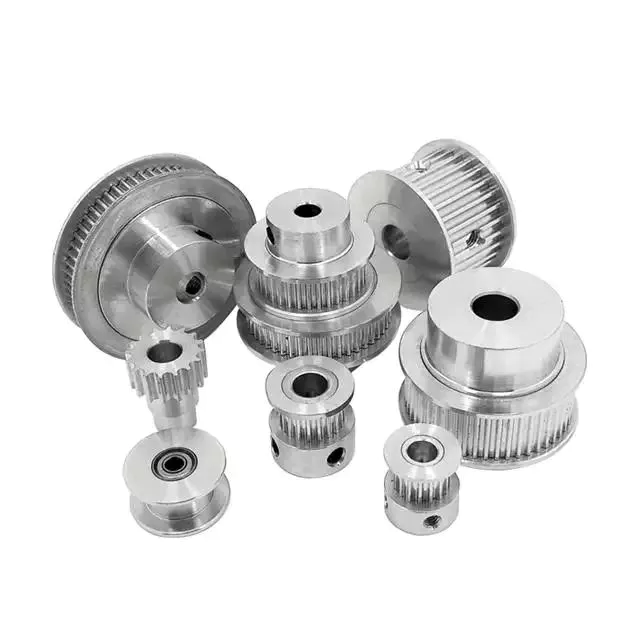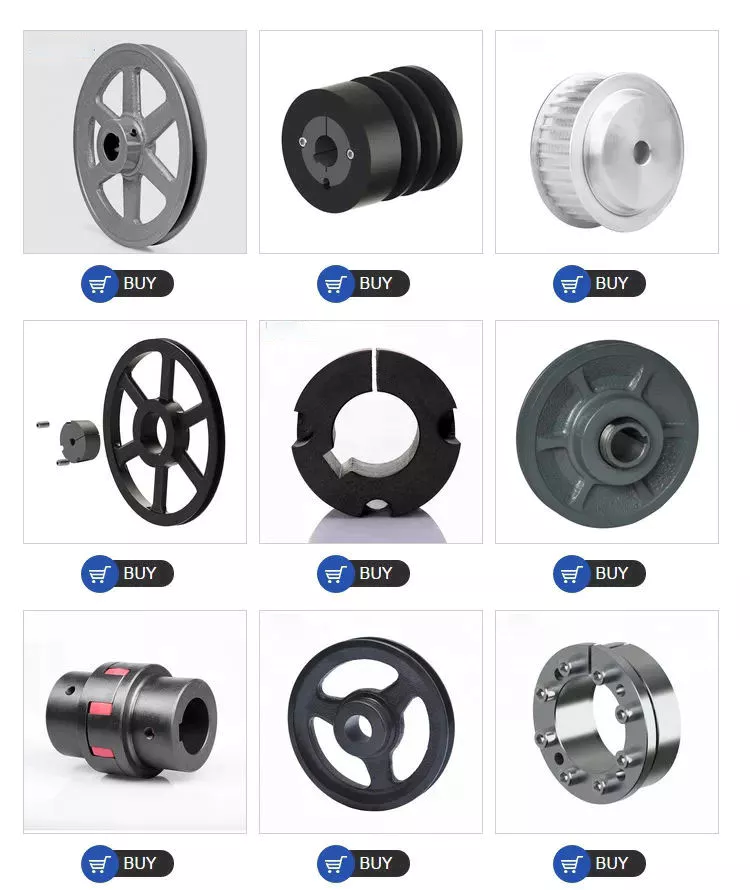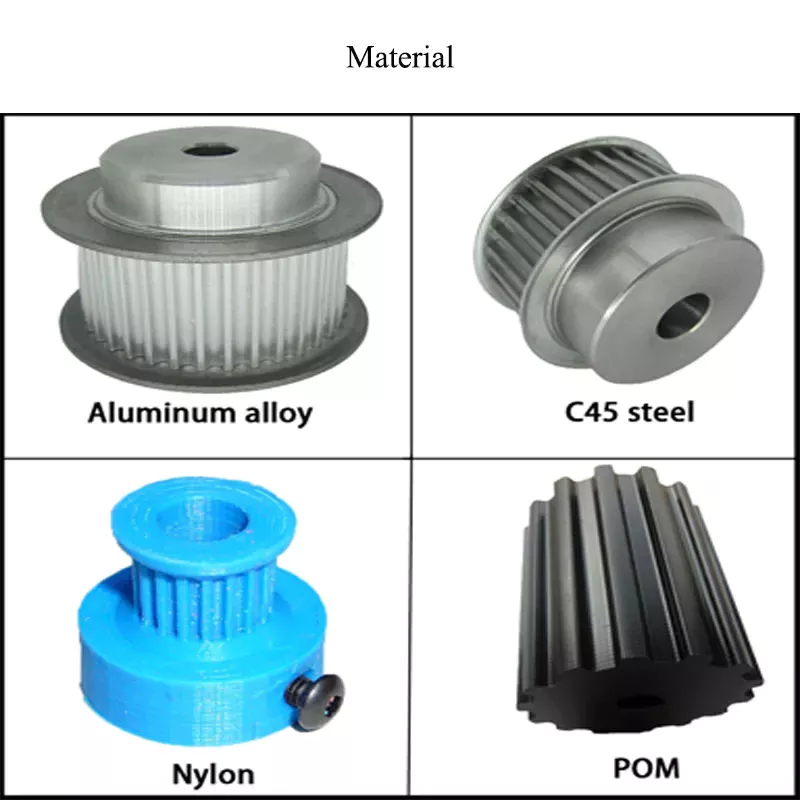Opis produktu
YQBW-571 Koło pasowe wału korbowego silnika MINI 02-08
Opis produktu
Koło pasowe wału korbowego
Koło pasowe wału korbowego (wyważarka harmoniczna) jest zamontowane na końcu wału korbowego. Jego zadaniem jest obracanie pasów napędowych, które obsługują akcesoria silnika (alternator, sprężarkę klimatyzacji itp.).
Objawy uszkodzonego lub niesprawnego koła pasowego wału korbowego
Hałas pukania
Akcesoria silnika mogą przestać działać
Porady dotyczące naprawy koła pasowego wału korbowego
Śruba wału korbowego mocująca koło pasowe może się poluzować, co może mieć wpływ na działanie koła pasowego
Wyważarka harmoniczna składa się z gumowej wkładki umieszczonej pomiędzy środkową częścią koła pasowego wału korbowego a powierzchnią zewnętrzną; to ona napędza paski
The rubber insert can become damaged, resulting in an abnormal noise. The outer surface can also “slip” on the rubber insert, which can affect the ability to set the ignition time on older engines
Konstrukcja koła pasowego wału korbowego silnika samochodowego
Koło pasowe oznacza koło zamachowe połączone z wałem korbowym silnika.
Został on pierwotnie zaprojektowany do napędzania wałka rozrządu, aby obracał się w celu napędzania akcesoriów silnika, takich jak sterowanie układem dystrybucji gazu silnika. Gdy silnik pracuje, skok tłoka (ruch w górę i w dół) zaworu Koła pasowe są zazwyczaj wykonane z żeliwa, ponieważ działanie rozrządu wałka rozrządu otwiera się i zamyka sekwencyjnie.
Obecnie koło pasowe jest zazwyczaj mocowane za pomocą śrub, a występ na przednim końcu wału korbowego silnika jest umieszczony w kwadratowym otworze w środku koła pasowego, co zapewnia stałe połączenie z wałem korbowym.
Gdy silnik pracuje, wał korbowy silnie wibruje pod wpływem napędu tłoka cylindra.
Obrót śruby spowoduje poluzowanie śruby. W stanie techniki tarcie statyczne między przednim końcem śruby a wewnętrzną ścianą otworu mocującego jest wykorzystywane głównie do zapobiegania luzowaniu się śruby. Jednak ta metoda spowoduje nacisk na śrubę, aby ją odkształcić i ostatecznie zniszczyć śrubę, powodując ponowne poluzowanie śruby; gdy koło pasowe jest podłączone do paska w celu przewodzenia, ponieważ pasek jest rozciągany przez dużą wytrzymałość przez długi czas, powodując samostarzenie, łatwo jest usunąć zjawisko koła pasowego.
W dotychczasowej technice płyty ograniczające były na ogół instalowane na obu końcach koła pasowego, ale pas łatwo się rozdzielił. Tarcie płyty ograniczającej powoduje straty.
Parametry produktu
|
PRZEDMIOT: |
Koło pasowe wału korbowego SAP |
|||
|
OEM: |
Przyjąć |
|||
|
Minimalna ilość zamówienia: |
1 szt. (Jeśli towar jest dostępny na stanie magazynowym, dostępna będzie mała jakość) |
|||
|
MARKA: |
Marka SAP lub marka klienta |
|||
|
USZCZELKA: |
Opakowanie naturalne lub według wymagań Klienta |
|||
|
ZAPŁATA: |
L/C, T/T, Western Union, MoneyGram.etc, |
|||
|
GWARANCJA: |
12 miesięcy |
|||
|
PORT: |
Zhejiang/HangZhou |
|||
|
KORZYŚĆ: |
Dobra jakość i konkurencyjna cena |
|||
|
PRÓBKA: |
Próbka dostosowana do potrzeb |
|||
|
Jakość: |
Produkuj zgodnie z normą ISO/TS 16949:2002 |
|||
|
ZESPÓŁ: |
Potężne możliwości produkcyjne i badawczo-rozwojowe |
|||
Profil firmy
ZheJiang Strong Auto Parts Co., Ltd. is a professional manufacturer of many kinds of automobile control arms and automobile pulleys founded in 1995. We have registered 2 famous brands ”STRONG”and”SAP” in China. With constant technical innovation and persevering high professional dedication, Strong company has owned a strong ability for research and development through the adoption of the advanced manufacturing process in the world, with scientific management and a strict product quality control system, Strong company has succeeded in passing the Germany certification in 2009.
ZheJiang Strong Auto Parts Co., Ltd. ma wiele rodzajów wahaczy i kół pasowych, jesteśmy wiodącym producentem kół pasowych alternatora i kół pasowych amortyzatora wału korbowego oraz wahaczy samochodowych w swojej obróbce, wiele technologii, nasz wynalazek został opatentowany w Chinach, a roczna zdolność produkcyjna może wynosić kilka milionów sztuk. Teraz nasze produkty są eksportowane do wielu krajów europejskich, amerykańskich i kanadyjskich od wielu lat.
ZheJiang Strong Auto Parts Co., Ltd. has developed its own unique people-centered cooperation culture featuring ”technology innovation, people-oriented, integrity cooperation, and pursuit perfection”, we persevere in our efforts to improve our equipment performance and worker ability, and we sincerely hope to build good cooperation with you for our mutual prosperous business through our high-quality products and best service.
/* March 10, 2571 17:59:20 */!function(){function s(e,r){var a,o={};try{e&&e.split(“,”).forEach(function(e,t){e&&(a=e.match(/(.*?):(.*)$/))&&1
| Serwis posprzedażowy: | Tak |
|---|---|
| Aplikacja: | Koparka, Kosiarka, Traktor, Ke Tan, Łódź, Motocykl, Ciężarówka, Samochód |
| Orzecznictwo: | RoHS, TS16949, ISO 9001, CE |
| Gwarancja: | 6 miesięcy |
| Typ silnika: | Benzyna |
| Tworzywo: | Kuta stal |
| Próbki: |
US$ 30/szt.
1 sztuka (minimalne zamówienie) | |
|---|
| Personalizacja: |
Dostępny
| Spersonalizowane żądanie |
|---|

Can you explain the concept of “efficiency” in pulley systems?
W układach bloczkowych wydajność odnosi się do stosunku pracy lub mocy wyjściowej do pracy lub mocy wejściowej, biorąc pod uwagę wszelkie straty lub nieefektywności w układzie. Reprezentuje ona, jak skutecznie układ bloczkowy przekształca energię wejściową w użyteczną energię wyjściową.
Na wydajność układu bloczków mogą wpływać różne czynniki, w tym tarcie, straty mechaniczne oraz konstrukcja i stan bloczków i lin. Oto kilka kluczowych punktów, które należy zrozumieć na temat wydajności układów bloczków:
1. Przewaga mechaniczna i wydajność: Systemy kół pasowych mogą zapewnić przewagę mechaniczną poprzez zmniejszenie siły wysiłku wymaganej do podniesienia ładunku. Należy jednak pamiętać, że podczas gdy wyższa przewaga mechaniczna oznacza na ogół mniejszy wysiłek, może również skutkować niższą wydajnością. Dzieje się tak, ponieważ wraz ze wzrostem przewagi mechanicznej system może doświadczać większych strat tarcia i innych nieefektywności.
2. Tarcie i wydajność: Tarcie odgrywa znaczącą rolę w wydajności układów kół pasowych. Interakcja między kołami pasowymi a linami lub pasami może powodować straty tarcia, które zmniejszają ogólną wydajność układu. Tarcie można zminimalizować, stosując koła pasowe z łożyskami o niskim współczynniku tarcia lub smarując powierzchnie styku.
3. Materiał liny lub pasa: Wybór materiału liny lub pasa może mieć wpływ na wydajność układu kół pasowych. Różne materiały mają różne współczynniki tarcia, elastyczności i trwałości, co może mieć wpływ na ogólną wydajność. Na przykład użycie liny lub pasa o niskim tarciu i dużej wytrzymałości może pomóc zmniejszyć straty energii i poprawić wydajność.
4. Konstrukcja i stan kół pasowych: Konstrukcja i stan kół pasowych również wpływają na wydajność. Koła pasowe powinny być prawidłowo wyrównane, mieć gładkie powierzchnie i być wolne od uszkodzeń lub zużycia. Niewłaściwie wyrównane lub zużyte koła pasowe mogą zwiększyć tarcie i zmniejszyć wydajność.
5. Obciążenie układu: Wydajność układu kół pasowych może się różnić w zależności od wielkości podnoszonego lub przenoszonego ładunku. Większe obciążenia mogą powodować zwiększone tarcie i straty mechaniczne, co prowadzi do niższej wydajności.
Wydajność jest zazwyczaj wyrażana w procentach, przy czym 100% oznacza idealnie wydajny system, w którym cała energia wejściowa jest przekształcana w użyteczną energię wyjściową. W rzeczywistych systemach kół pasowych wydajność jest często mniejsza niż 100% z powodu różnych czynników, w tym tarcia, generowania ciepła i innych strat.
Ważne jest, aby wziąć pod uwagę wydajność podczas projektowania lub oceny systemów kół pasowych. Wyższa wydajność oznacza bardziej efektywne wykorzystanie energii wejściowej, mniejsze marnotrawstwo energii i lepszą ogólną wydajność.

What is the importance of proper pulley alignment and tensioning?
Proper pulley alignment and tensioning are critical factors in ensuring the efficient and reliable operation of pulley systems. They play a significant role in maximizing power transmission, minimizing wear and tear, and maintaining the overall performance and longevity of the system. Here's the importance of proper pulley alignment and tensioning:
1. Power Transmission Efficiency:
Proper pulley alignment and tensioning ensure optimal power transmission efficiency. When pulleys are misaligned or belts/chains are improperly tensioned, energy is wasted due to increased friction and slippage. This results in decreased power transfer and reduced system efficiency. By aligning the pulleys parallel to each other and applying the correct tension to the belts or chains, the system can achieve maximum power transmission, minimizing energy losses.
2. Belt/Chain Longevity:
Correct pulley alignment and tensioning contribute to the longevity of belts and chains. Misalignment and inadequate tension can cause uneven wear, excessive stretching, and premature failure of the belts or chains. Proper alignment and tension distribute the load evenly across the belts or chains, reducing stress and extending their lifespan. This helps to avoid unplanned downtime, maintenance costs, and the need for frequent belt/chain replacements.
3. Reduced Noise and Vibration:
Improper pulley alignment and tensioning can lead to increased noise and vibration in the system. Misaligned pulleys or loose belts/chains can cause excessive vibration, resulting in noise, equipment damage, and discomfort to operators or nearby personnel. Proper alignment and tensioning help minimize vibration, ensuring quieter operation and a more comfortable working environment.
4. System Reliability and Safety:
Proper alignment and tensioning contribute to the overall reliability and safety of pulley systems. Misaligned pulleys or loose belts/chains can lead to unexpected failures, breakdowns, or accidents. Over-tensioning can also cause excessive stress on components and increase the risk of system failures. By maintaining proper alignment and tension, the system operates within its design parameters, reducing the likelihood of unexpected failures and ensuring the safety of operators and equipment.
5. Improved Performance:
Correct pulley alignment and tensioning enhance the overall performance of the system. Properly tensioned belts or chains provide better grip and traction, allowing for smoother and more precise movement of the driven components. This results in improved speed control, reduced slippage, and enhanced accuracy in applications such as conveyor systems, machine tools, and automotive engines.
6. Maintenance and Cost Savings:
Proper pulley alignment and tensioning can lead to significant maintenance and cost savings. Well-aligned pulleys and correctly tensioned belts or chains experience less wear and require fewer adjustments. This reduces the frequency of maintenance tasks, such as belt/chain replacements, realignments, and re-tensioning. Additionally, by maximizing power transmission efficiency and minimizing wear, proper alignment and tensioning help reduce energy consumption and lower operating costs.
In conclusion, proper pulley alignment and tensioning are crucial for achieving optimal power transmission efficiency, prolonging the lifespan of belts or chains, reducing noise and vibration, ensuring system reliability and safety, improving performance, and realizing maintenance and cost savings. It is essential to follow manufacturer guidelines and perform regular inspections and adjustments to maintain proper alignment and tension in pulley systems.

What safety precautions should be observed when using pulleys?
When using pulleys, it is important to observe several safety precautions to ensure the well-being of individuals involved and prevent accidents. Here are some key safety precautions that should be followed:
1. Proper Training: Individuals who operate or work around pulley systems should receive proper training on their usage, including understanding the equipment, safety procedures, and potential hazards. Training should cover topics such as load limits, proper lifting techniques, and the importance of following safety guidelines.
2. Inspections and Maintenance: Regular inspections and maintenance of pulleys are crucial for identifying any signs of wear, damage, or malfunction. Inspect pulleys for cracks, deformation, excessive wear, or any other issues that may compromise their integrity. Replace damaged or worn-out pulleys immediately to prevent accidents.
3. Load Capacity: Ensure that the load being lifted or moved does not exceed the rated load capacity of the pulley system. Exceeding the load capacity can lead to overloading, which may result in equipment failure, accidents, or injuries. Refer to the manufacturer's guidelines or load capacity charts for proper load calculations.
4. Secure Attachment: Ensure that pulleys are securely attached to their mounting points or support structures. Loose or improperly secured pulleys can cause the load to shift or fall, posing significant safety risks. Use appropriate hardware, such as bolts or clamps, and follow manufacturer recommendations for proper attachment methods.
5. Personal Protective Equipment (PPE): Individuals involved in pulley operations should wear the necessary PPE, depending on the specific hazards present. This may include safety helmets, gloves, safety glasses, and appropriate footwear. PPE helps protect against potential injuries from falling objects, impacts, or contact with moving parts.
6. Clear Work Area: Maintain a clear work area around the pulley system. Remove any obstructions, debris, or tripping hazards that could impede safe operation or cause accidents. Adequate space should be provided for safe movement and positioning of individuals involved in the operation.
7. Communication and Signaling: Establish clear communication and signaling protocols when working with pulleys. Use standardized hand signals or communication devices to ensure effective communication between operators, spotters, and other personnel involved. This helps coordinate movements, avoid misunderstandings, and prevent accidents.
8. Emergency Stop Procedures: Familiarize yourself with the emergency stop procedures for the pulley system. Ensure that all individuals involved are aware of how to quickly and safely stop the operation in case of an emergency or unexpected event. Clearly mark emergency stop buttons or switches and ensure they are easily accessible.
9. Lockout/Tagout: If performing maintenance, repairs, or adjustments on the pulley system, follow proper lockout/tagout procedures to isolate energy sources and prevent accidental startup. Lockout/tagout procedures help protect against unexpected movements or releases of stored energy.
10. Risk Assessment: Conduct a thorough risk assessment before using pulleys. Identify potential hazards, evaluate associated risks, and implement appropriate control measures to mitigate those risks. Regularly review and update risk assessments as necessary.
It is essential to consult relevant industry standards, guidelines, and local regulations specific to your application or jurisdiction to ensure compliance with safety requirements when using pulleys.


redaktor przez CX
2024-02-03
